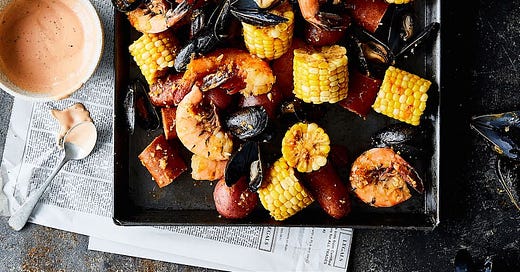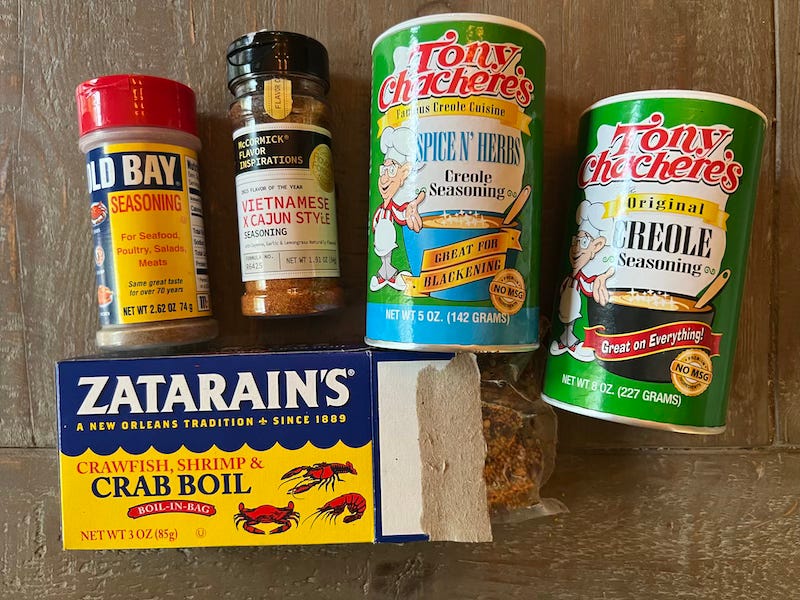My dad’s oldest brother, Bác Thảo, was a physician in Vietnam. (In Vientamese, “Bác” is a gender neutral honorific term for an elder; it rarely signals someone’s actual name.) He wasn’t a person of many words but was kind in his actions. In Saigon when I was five, I accidentally punctured my thumb while trying to use a sewing machine. Bác Thảo sewed my finger up. He was always gentle with me. Maybe it was that operating room experience. Or, maybe it was because he and his wife, Bác Thoa (also a physician), had ten children and only one of them was a girl. My parents had five kids, one of which was a boy. In our family, I was the youngest, chubby, and shy. Perhaps that made me extra adorable?
After Bác Thảo and his family arrive in America in 1975, his wife passed the foreign doctor exams (ECFMG) and retrained as a psychiatrist. Bác Thảo took the exams but was unsuccessful in passing. He casually helped out other Viet doctors but was never able to fully practice medicine in America.
Bác Thảo was often idle yet endlessly curious. He cooked (his wife did not). One of his specialties was Vietnamese beef jerky, which inspired me to make my own thịt khô bò recipe. In the 1980s, he noticed a lot of crawfish in streams near his Southern California home. He initially had no idea what they were but was smart enough to catch them. Bác Thảo simply boiled them and brought plastic grocery bags full of them to our home. There seemed to be an endless supply. We’d sit around the dining table for hours, peeling the crawfish, and dipping the tail meat in homemade mayonnaise or muối tiêu chanh (a classic dip of salt, pepper and lime that’s perfect with seafood).
Bác Thảo passed away about ten years ago. Last January, at my dad’s đám giỗ celebration of life, I asked my cousins about our clan’s 1980s crawfish bonanza. One of them said, "What my dad did back then is likely illegal now. He took a lot of crawfish from those streams. Seemed like we couldn’t get enough.”
Couldn’t get enough. That sums up the Viet seafood boil experience of many people. Once you eat it, you get hooked, you want to keep polishing your recipe. That’s why I presenting my 2019 and 2023 Viet-Cajun seafood boil recipes.
2019 Viet-Cajun Seafood Boil Recipe
Over the past thirty or so years, what’s become known as Viet-Cajun seafood boils is more complex than what our family had in the 1980s. There’s more spice and the seafood is often cooked with carbs (corn and potatoes) and pork (sausage). In 2019, I published my first Viet-Cajun Seafood Boil recipe in Vietnamese Food Any Day (VFAD). Have the cookbook? You’ll recognize this compelling photo by Aubrie Pick. If you don’t already have the book, I’m publicly sharing along with the VFAD Viet-Cajun Seafood Boil recipe on my website.
I’ve learned a lot about Viet-Cajun seafood boils since VFAD published, especially after going to New Orleans earlier this year to report on the Viet-Cajun experience.
Viet-Cajun or Viet-Creole? If you haven’t, listen to the episodes of “You Always Return” at the Oxford American’s Points South podcast: part 1 and just released — part 2! You’ll glean that to New Orleanians, despite the broad fervor over Viet-Cajun, they prefer to frame the Viet American seafood boil as a Viet-Creole dish to accurately reflect the local blending of Italian, Spanish, African, German, Caribbean, Native American and Portuguese ideas. For more on the subject, check this article on the difference between Cajun and Creole.
Viet Cajun Spice Blend Options
To figure out the flavors of these boils, I tried out different boil seasoning spice blends.
They vary a lot in flavor and salt. Some have no salt while others are well salted. My tasting notes:
Old Bay: Has a lot of celery seed, which goes well with the boil when there are pork products involved. I found it overwhelming with seafood only.
Tony Chachere’s: Has a wide range of heat and salt. The Original Creole is salty but not offensively so. Spice N’ Herbs is more gentle.
McCormick Vietnamese X Cajun: Is more nuanced than the others with lemongrass and citrus built in. No salt.
Zatarain’s: Has mustard seed and bay leaf. This format comes in a plastic bag with holes so the flavor will transfer. It’s for 4 pounds of seafood. If you’re making smaller batches, you’d have to open up the bag and dump in smaller amounts. No salt.
After analyzing, tasting and cooking with these, I’m not sure you need to use a commercial blend, unless it’s something you want to keep on hand for other boils or recipes. Do you have a favorite brand/blend?
The New Orleans chefs that I met generously shared their tips, such as too much spicy heat and richness spoils the fresh seafood flavor! I also reviewed my interview notes from years past. The upshot is this: during the past two weeks, I’ve rethought my recipe and developed a better, tastier one that’s all seafood and vegetables and contains lots more Vietnamese-ness.
The result is the following Viet-Cajun seafood boil recipe for paid subscribers.
It’s a versatile blueprint because seafood boils are highly customizable, just like Vietnamese food. You should have a recipe to tailor to your own situation and to tinker with to craft your own masterpiece.
The deep dive tips and recipes fulfill my pledge to folks who have financially supported Pass the Fish Sauce. If you have not, join the crew! You’ll add more wind to my sails!






